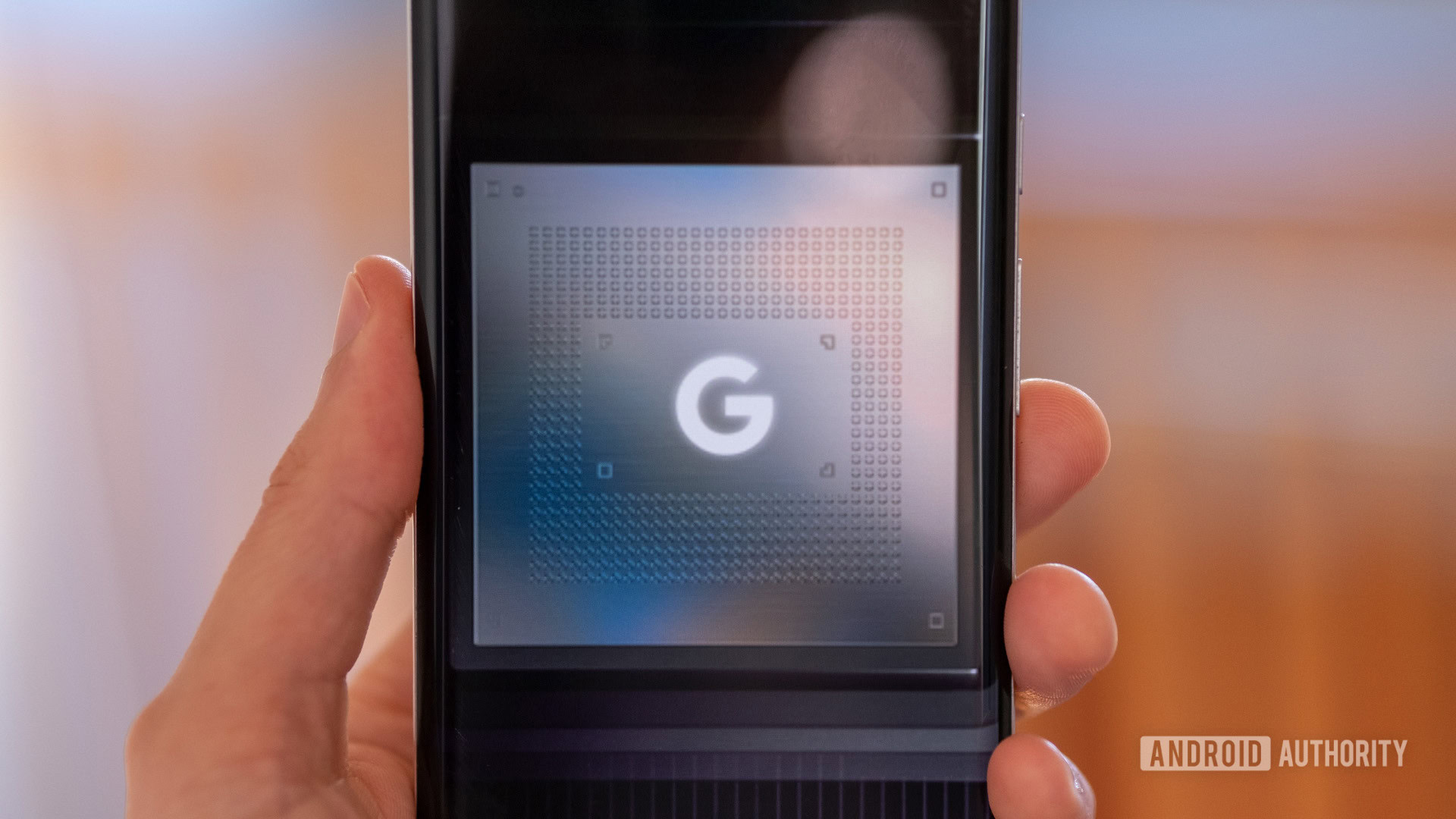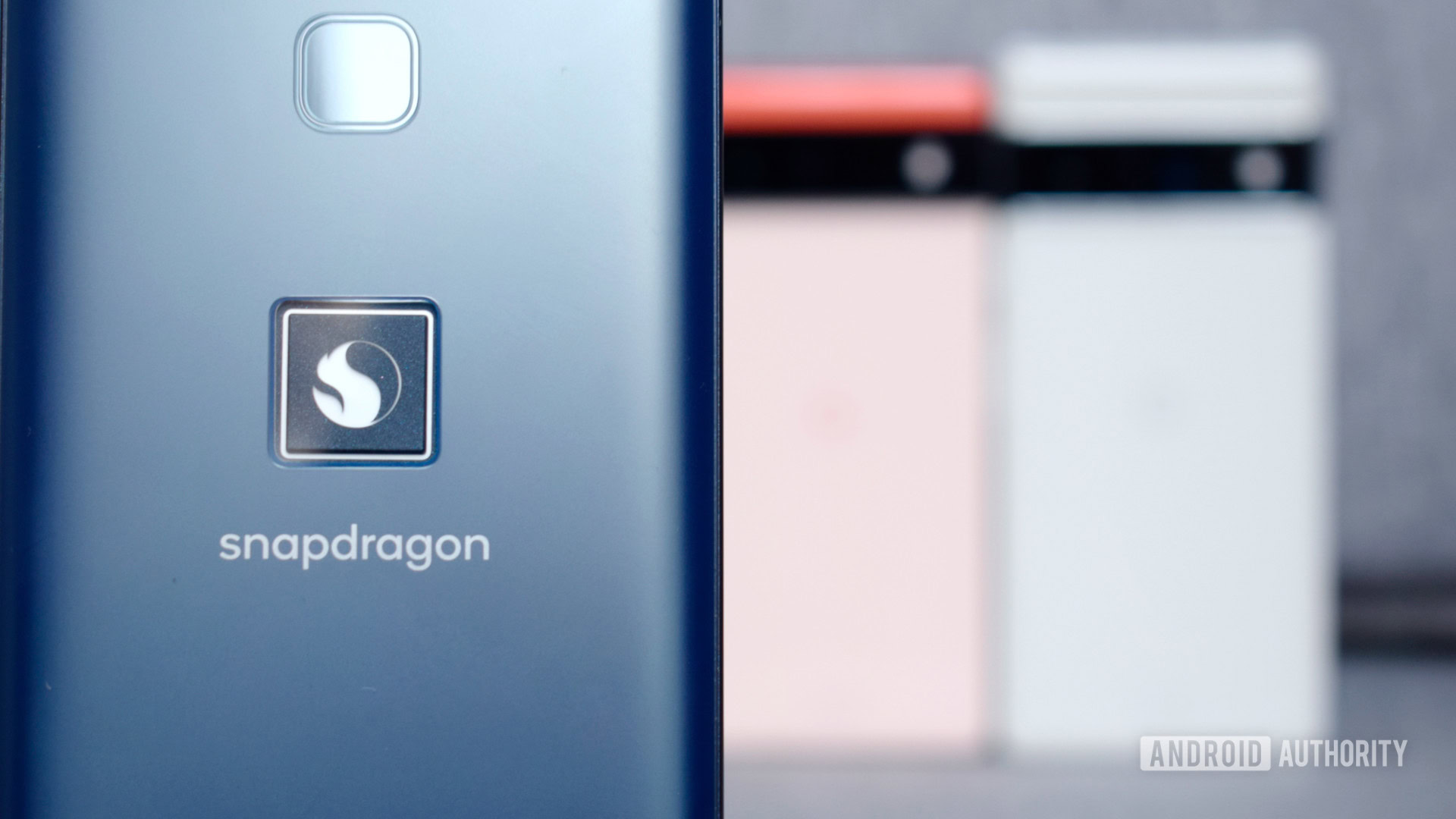With the arrival of the Pixel 7 and Pixel 7 Pro comes the successor to the Google Tensor chipset. Dubbed the Tensor G2, this is Google’s second foray into the world of semi-custom silicon development, built in conjunction with Samsung Semiconductor.
Google is taking the same approach with the Tensor G2. At its core, you’ll still find slightly older and presumably cheaper off-the-shelf components that won’t be as snappy or efficient as the latest components on the market. Paired with Google’s next-gen custom AI and imaging silicon smarts, though, the Pixel 7 series is banking on raw power being far less important than specially crafted hardware for Google’s bespoke speech, contextual support, imaging and video, and security experiences.
Is Google right? Let’s take a closer look at what’s going on inside the Tensor G2.
Google Tensor vs Tensor G2 specs
| Google Tensor G2 | Google Tensor | |
|---|---|---|
|
CPU |
Google Tensor G2
2x Arm Cortex-X1 (2.85GHz) |
Google Tensor
2x Arm Cortex-X1 (2.80GHz) |
|
GPU |
Google Tensor G2
Arm Mali-G710 MP7 |
Google Tensor
Arm Mali-G78 MP20 |
|
Caches |
Google Tensor G2
4MB CPU L3 |
Google Tensor
4MB CPU L3 |
|
RAM |
Google Tensor G2
LPDDR5 |
Google Tensor
LPDDR5 |
|
Machine Learning |
Google Tensor G2
Next-gen Tensor Processing Unit |
Google Tensor
Tensor Processing Unit |
|
Media Decode |
Google Tensor G2
H.264, H.265, VP9, AV1 |
Google Tensor
H.264, H.265, VP9, AV1 |
|
Modem |
Google Tensor G2
4G LTE |
Google Tensor
4G LTE |
|
Process |
Google Tensor G2
Samsung 5nm |
Google Tensor
Samsung 5nm |
What’s new with Tensor G2

Robert Triggs / Android Authority
As the table above highlights, there are only a handful of core changes between the original Tensor and the Tensor G2, and even they might not all be that meaningful.
For starters, the aging Cortex-A76 middle cores from 2018 have been replaced with 2020’s Cortex-A78. Following Arm’s claimed IPC improvements, these two cores could offer around 25% more performance in exchange for marginally more area and power consumption. However, the other CPU cores remain virtually unchanged, with two powerful but two-generations-old Cortex-X1s for the heavy lifting and four low-power Cortex-A55s for background tasks. We shouldn’t expect wholesale performance changes here; the overall CPU layout is primarily unchanged but should provide a little more performance for gaming and other sustained workloads.
Google’s Tensor G2 is a case of iterative rather than wholesale improvements.
The GPU layout is similarly revised yet not meaningfully different. Moving to Arm’s 2021 Mali-G710 microarchitecture offers a 20% performance and power improvement compared to the Mali-G78, and up to a 35% machine learning uplift. Impressive, and this may suggest in part why Google has switched from a beefy 20-core setup last year to the smallest possible 7-core configuration. Although we should note that these new cores provide very different performance levels.
Read more: Armv9 heralds the next-generation of smartphone CPUs
Our own and industry testing suggests a new Mali-G710 offers roughly the equivalent of 2x to 3x the performance of one Mali-G78 core. With that in mind, the G2’s graphics performance will likely fall somewhere on either side of the original Tensor, depending on the clock speed. Ultimately, it’ll surely fall lower down the performance rankings than the Mali-G710 MC10 Dimensity 9000 Plus and Snapdragon 8 Plus Gen 1. We’ll know for sure once we’ve benchmarked the chip.
Google’s upgraded TPU handles camera and speech tasks up to 60% faster.
Continuing the refinement trend, Google introduces its next-generation custom Tensor Processing Unit (TPU) inside the Tensor G2. Tightly coupled to the image pipeline, the TPU handles a wide range of machine learning tasks, from real-time translations to image and video processing. Google hasn’t specified exactly what’s new with its latest iteration TPU but has told Android Authority that camera and speech tasks run up to 60% faster. Speaking of, the ISP now supports 10-bit HDR video recording, Google HDRnet tone mapping, and up to 108MP zero shutter lag images — though the Pixel 7 series has a 48MP camera.
How does Tensor G2 stack up against the competition?

Robert Triggs / Android Authority
With older CPU components and a comparatively compact GPU cluster, Google’s Tensor G2 isn’t going to hang at the top of the benchmark pack with the likes of the Qualcomm Snapdragon 8 Plus Gen 1, Mediatek Dimensity 9000 Plus, Samsung Exynos 2200, and Apple A16 Bionic.
As we’ve seen from recent benchmarks, the latest chipsets from Apple and Qualcomm hand in performance that far eclipses the original Tensor and likely the Tensor G2 as well. Although Google’s chipset shares the same GPU cores as Mediatek’s very capable Dimensity 9000 Plus, the lower core count will undoubtedly result in lower frame rates in high-performance games.
Read more: Snapdragon 8 Plus Gen 1 vs Dimensity 9000 Plus benchmarks
To boot, Google’s latest chipset is still based on the older Samsung Foundries 5LPE process, which isn’t as efficient as the 4LPE node used by the Exynos 2200 and Snapdragon 8 Gen 1. TSMC’s N4 node, which Qualcomm turned to in order to solve overheating for its 8 Plus Gen 1 model, is more efficient still, and we’re hurtling towards 3mm in the not-too-distant future. While Google may still have plenty of leverage in its custom machine learning silicon, its rivals aren’t standing still in this regard either — though the touted 60% performance boost should push Google out in front here.
| Google Tensor G2 | Apple A16 Bionic | Snapdragon 8+ Gen 1 | Exynos 2200 | |
|---|---|---|---|---|
|
CPU |
Google Tensor G2
2x Arm Cortex-X1 (2.85GHz) |
Apple A16 Bionic
2x Everest (3.46GHz) |
Snapdragon 8+ Gen 1
1x Cortex-X2 (3.2GHz) |
Exynos 2200
1x Cortex-X2 (2.8GHz) |
|
GPU |
Google Tensor G2
Arm Mali-G710 MP7 |
Apple A16 Bionic
Apple 5-core GPU |
Snapdragon 8+ Gen 1
Adreno 730 |
Exynos 2200
Xclipse 920 |
|
Caches |
Google Tensor G2
4MB shared L3 |
Apple A16 Bionic
24MB system cache |
Snapdragon 8+ Gen 1
6MB shared L3 |
Exynos 2200
Unknown |
|
RAM |
Google Tensor G2
LPDDR5 |
Apple A16 Bionic
LPDDR5 |
Snapdragon 8+ Gen 1
LPDDR5 |
Exynos 2200
LPDDR5 |
|
Machine Learning |
Google Tensor G2
Next-gen Tensor Processing Unit |
Apple A16 Bionic
16-core Neural Engine |
Snapdragon 8+ Gen 1
Hexagon |
Exynos 2200
Dual-core NPU |
|
Media Decode |
Google Tensor G2
H.264, H.265, VP9, AV1 |
Apple A16 Bionic
H.264, H.265, VP9 |
Snapdragon 8+ Gen 1
H.264, H.265, VP9 |
Exynos 2200
H.264, H.265, VP9, AV1 |
|
Modem |
Google Tensor G2
4G LTE |
Apple A16 Bionic
4G LTE |
Snapdragon 8+ Gen 1
4G LTE |
Exynos 2200
4G LTE |
|
Process |
Google Tensor G2
Samsung 5LPE |
Apple A16 Bionic
TSMC N4 |
Snapdragon 8+ Gen 1
TSMC N4 |
Exynos 2200
Samsung 4LPE |
Ultimately, we’re not far away from next-generation chipsets from Qualcomm, Mediatek, and Samsung that will power 2023 Android flagship phones. Google has not transitioned to the latest Armv9 architecture, the latest components of which include the powerhouse Cortex-X3 and Cortex-A715 CPUs destined for next-gen SoCs. While the Pixel 7 series might not feel too far behind at the moment, that could all change in six months’ time.
Even so, we don’t have any complaints about the performance of slightly older processors in day-to-day tasks, and that’s not going to change unless some more demanding apps suddenly come along. Despite technology dating back to 2020, dual Cortex-X1 CPUs still offer more CPU grunt than you’ll need in most situations.
Google claims to have reduced the Tensor G2’s power consumption.
The bigger worry is whether this aging design will hold up to the competition when it comes to power efficiency, particularly as they benefit from newer, more efficient manufacturing processes. Google claims to have upgraded all of the Tensor G2 sub-systems to reduce power consumption for everyday workloads, but will that be enough to close the gap? Power consumption is likely to be the deciding factor in whether Tensor G2 succeeds with its very different philosophy to the performance-focused SoCs designed by rival manufacturers.
Watch this space for Google Tensor G2 benchmarks once we can share our review of the new Pixel 7 and Pixel 7 Pro.



